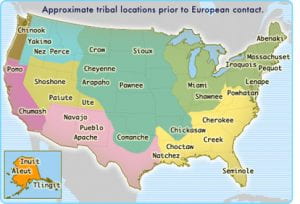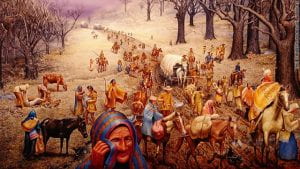In 1 986, President Ronald Reagan issued a proclamation making November 23-30, 1986, American Indian Week. Since then, each president has proclaimed the entire month of November to be Native American Heritage Month. It is important to understand and respect Native American heritage and cultural traditions, especially has an archaeologist. Archaeologists have extremely close interactions with Native American culture through their work. We excavate their villages, identify their material culture, and try our best to preserve their heritage and work with First Nation communities in our work.
986, President Ronald Reagan issued a proclamation making November 23-30, 1986, American Indian Week. Since then, each president has proclaimed the entire month of November to be Native American Heritage Month. It is important to understand and respect Native American heritage and cultural traditions, especially has an archaeologist. Archaeologists have extremely close interactions with Native American culture through their work. We excavate their villages, identify their material culture, and try our best to preserve their heritage and work with First Nation communities in our work.

Archaeology in the past has not treated Native Americans very well. The first American Archaeologist Thomas Jefferson destroyed sacred mounds that were thought to have been build by more civilized and advanced people. The abuse was not isolated to the destruction of their sacred sites but also their ways of life. In 1838, the Cherokee were forcibly removed from their traditional homes to an Indian Territory through a marched known as the trail of tears. During this time many treaties between the tribes and government were signed a broken resulting in many conflicts. Like other marginalized groups, Native American were given the right to vote late in US history. However, when states began to require voter ID card with permanent street addresses, many Native American, who had PO box addresses, were again not able to vote and express their rights as citizens of the US.
The best way for archaeologists to help is to consult with the tribes before and throughout the life of a project. Section 106 of the National Preservation Act of 1966 requires archaeological survey and consultation with Native American Tribes. However, these requirements should not be simple check marks on a form. To have the most effect consultation needs to be done throughout a project. A great example of how consulting throughout a project can make a difference is when the Iowa Department of Transportation discovered unique Native American geoglyphs while building a highway in 2013. The Tribes were involved in every step and the highway was able to be redirected around the features. For more about this project watch this video.
November may be Native American Heritage Month, but their heritage and traditions should be thought of throughout the year and during every project. Years of prosecution and neglect has already limited the number of sites and strained trust between the tribes, government, and archaeologists. We are working to preserve everything we can and regain that trust but it is a long and complicated road.
For more visit these sites:
And follow IUP Anthropology on Facebook, Twitter, and Instagram

